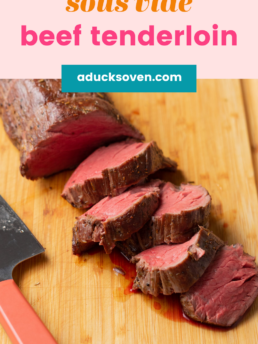Beef tenderloin is one of the most delicious cuts you can purchase. In fact, filet mignon comes from beef tenderloin! It’s incredibly tender and will melt in your mouth. With sous vide, you can ensure it’s perfectly medium-rare so there’s no risk of overcooking what can be an expensive cut of beef.
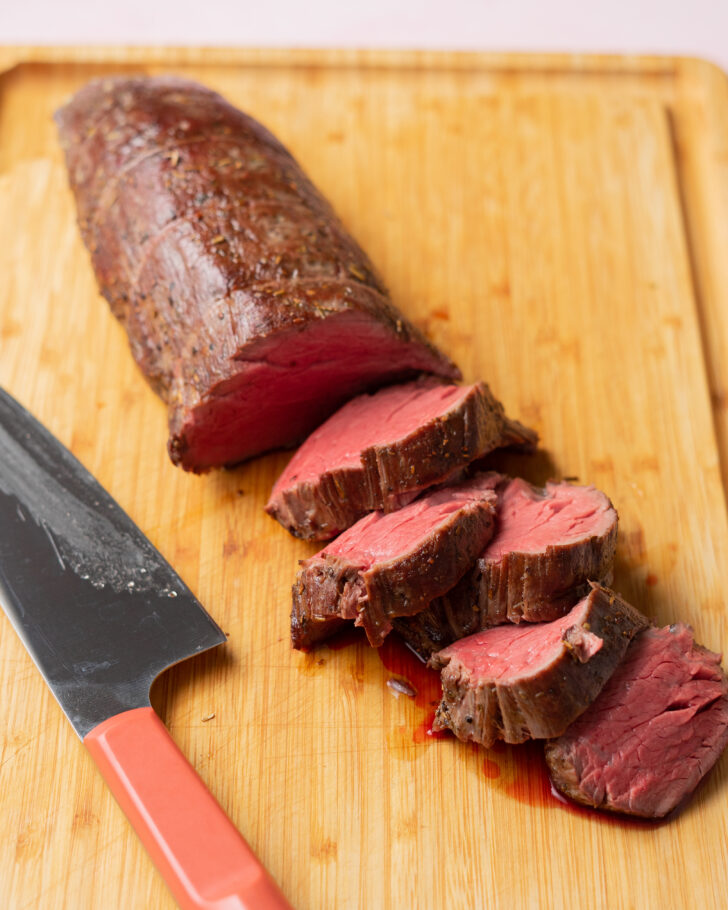
Sous vide is the best cooking method for anything that can be a little “finicky” to cook like beef recipes you want to keep medium-rare and seafood recipes like salmon that you don’t want to risk overcooking. Since the cooking environment is the exact temperature you want the inside of the meat to come to, you literally can’t overcook it! Want to learn more? I have a beginner’s guide all about sous vide cooking.
If you’re excited to prepare even more sous vide recipes, I’ve got plenty here and in my cookbooks!
Where to Purchase Beef Tenderloin
A whole beef tenderloin roast might be difficult to find at your grocery store. Go to your local butcher and ask them to cut you one. For the best cut, ask for a center cut beef tenderloin and ask them to tie it up for presentation for you.
A heads up: this is an expensive cut. For a 2.5 lb tenderloin, I usually expect to pay around $70 from my local butcher. Even so, this cut is absolutely worth it for special occasions!
How to Season Beef Tenderloin
Save the marinades and flavor-packed rubs for cuts like flank steak: this unbelievably tender cut doesn’t need much to shine! For seasoning, I either do simple kosher salt and black pepper or my favorite herby kosher salt blend.
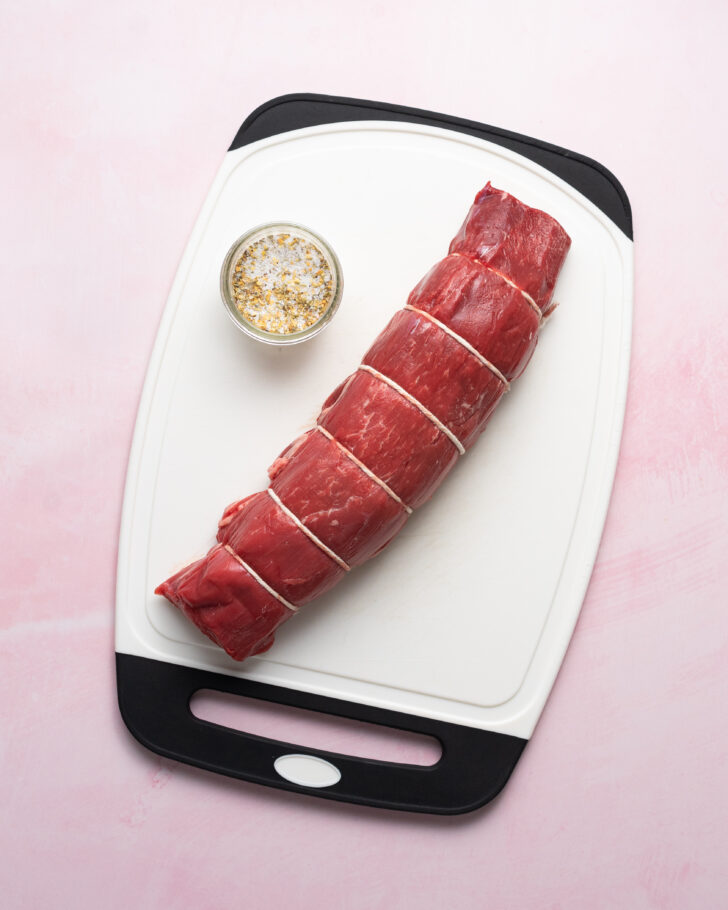
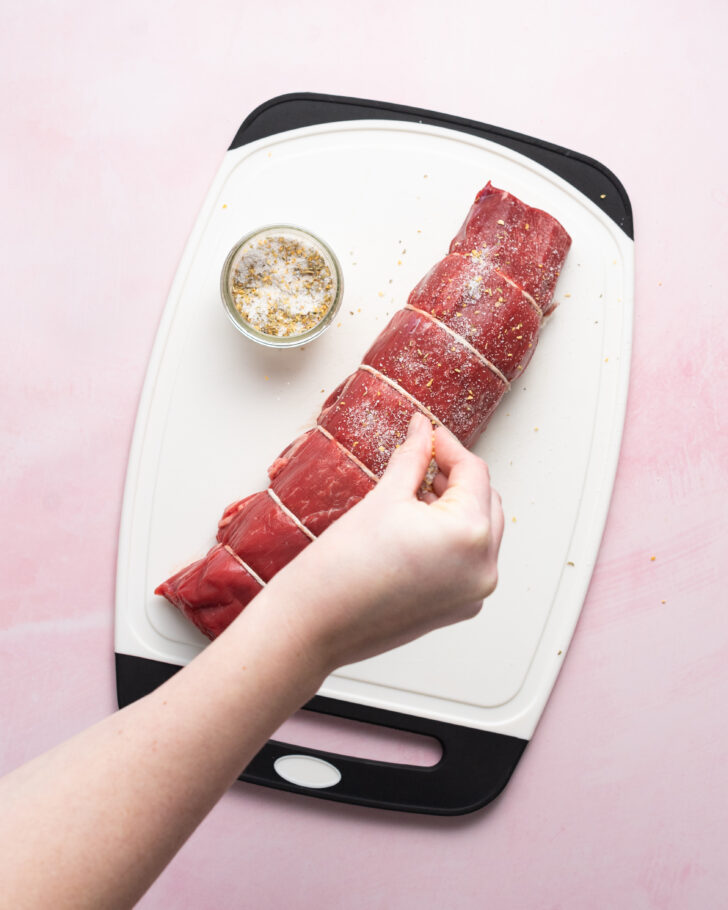
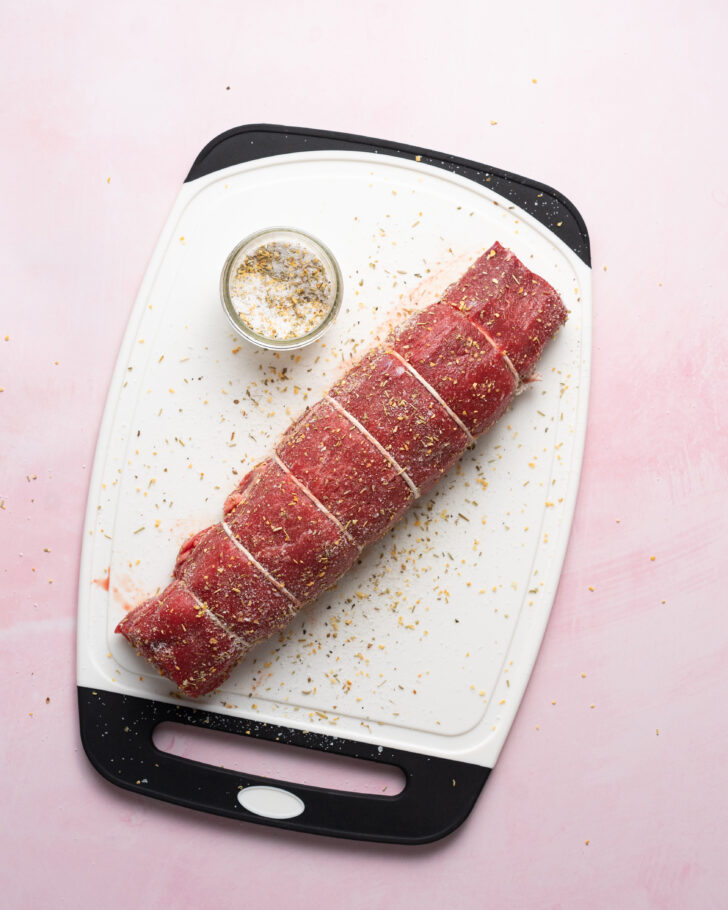
To give this tenderloin a good boost of flavor, I like to serve it with a compound butter like blue cheese butter. This cut may be tender, but it’s relatively lean and benefits from some added fat when serving.
How to Sous Vide Beef Tenderloin
This process is easier if you have a vacuum sealer, but no worries if you don’t. I have lots of alternative air removal methods like the water displacement method for you!
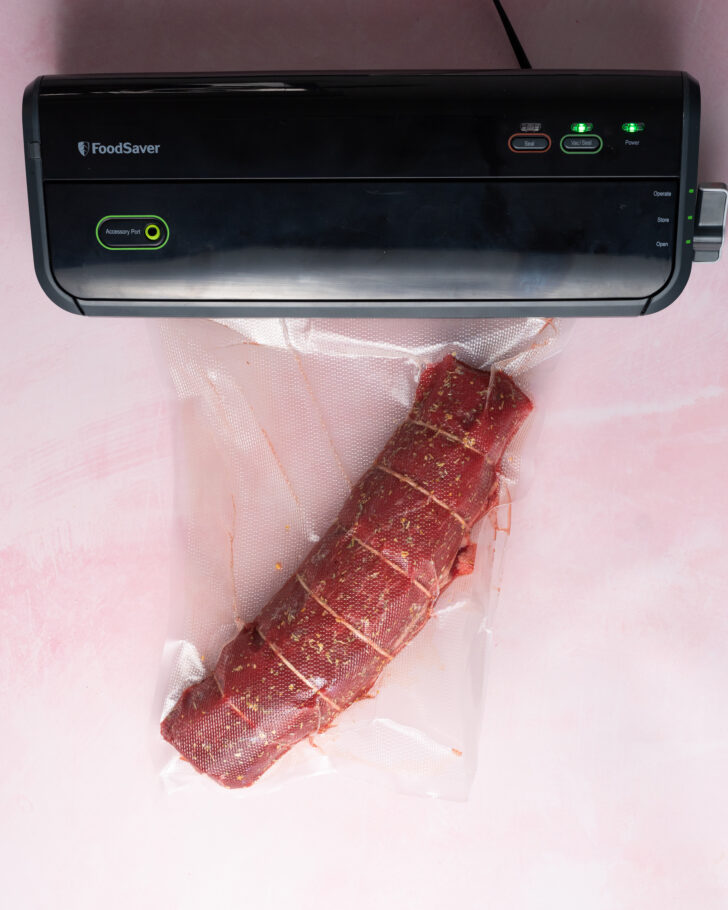
If you have a seasoned, vacuum sealed beef tenderloin in your freezer, you can sous vide from frozen!
The easiest way to make sure you fill your water bath the right amount is to place the vacuum sealed tenderloin in your container with the immersion circulator, then fill above the minimum line.
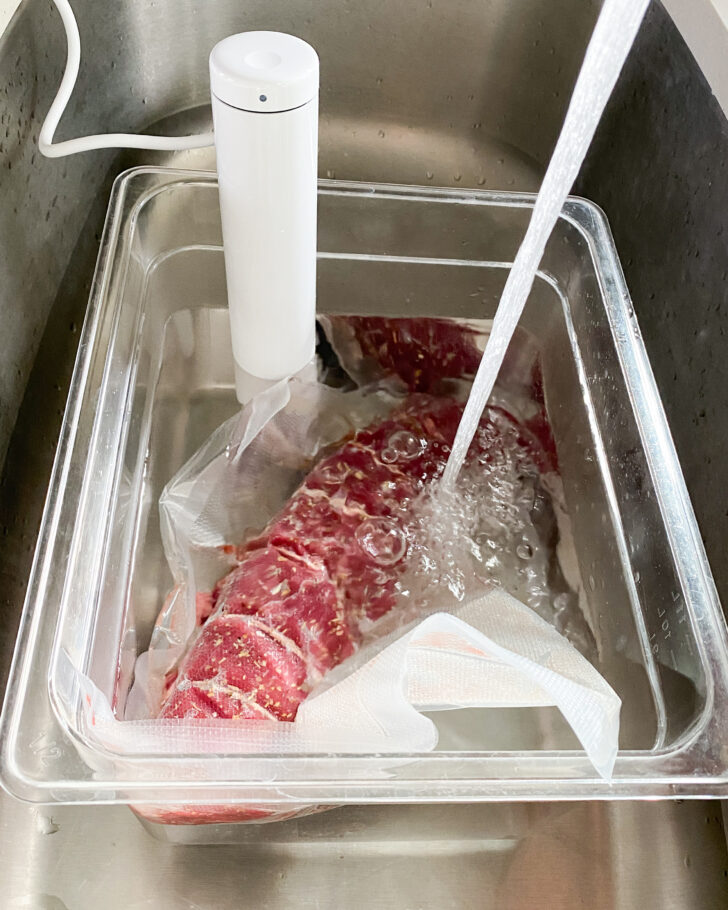
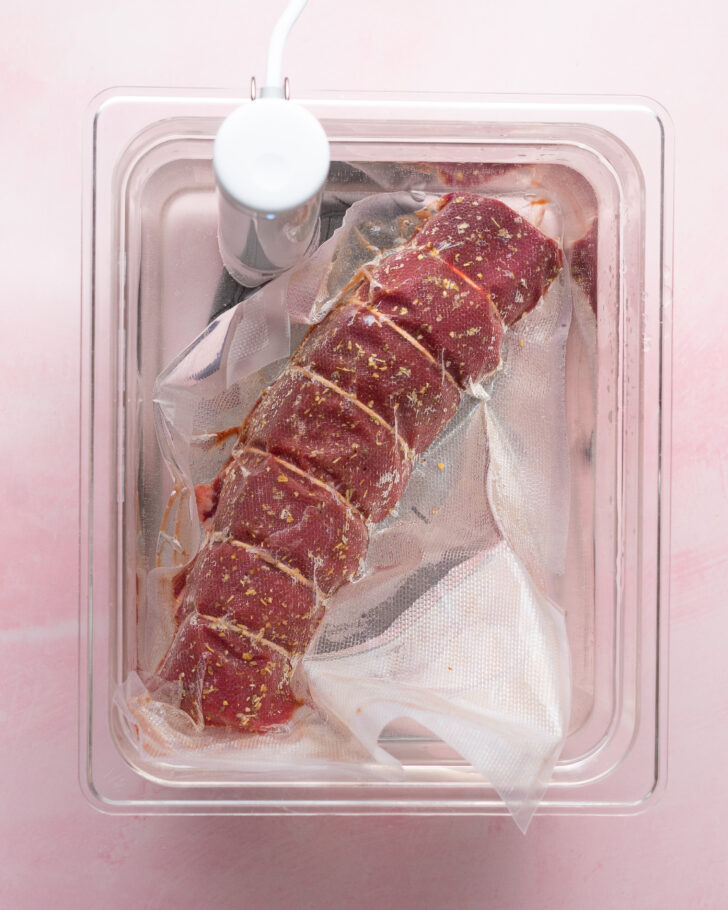
For a perfect medium rare, cook at 133 degrees for 2-4 hours. Don’t go longer than 4 hours, or the tenderloin can start to get mushy.
Then remove the tenderloin from the water bath and the bag.
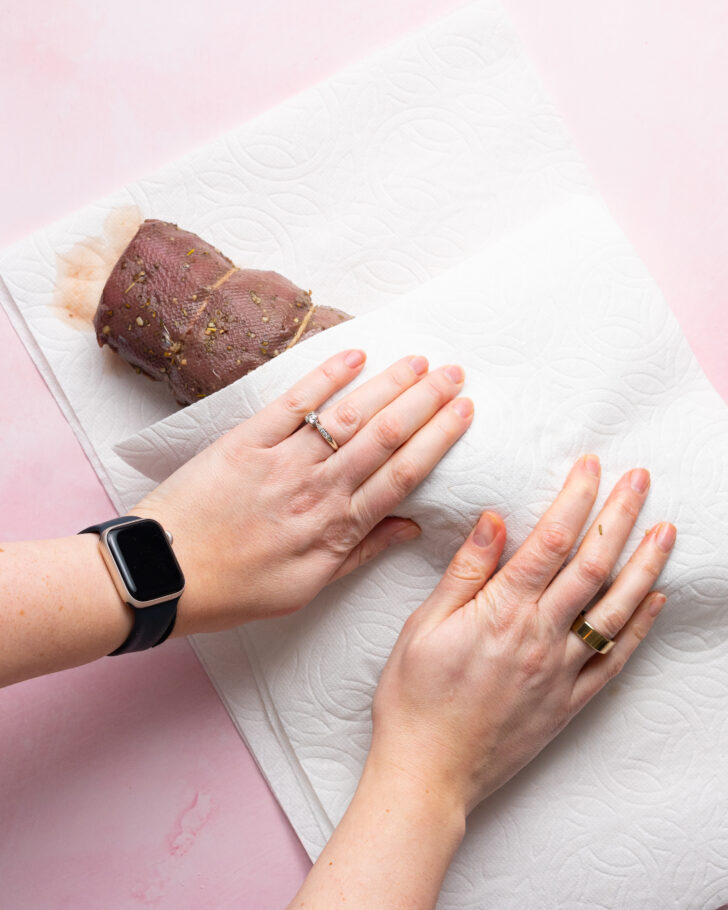

After drying the tenderloin and removing the twine, heat a cast iron skillet over high heat. Once smoking, add ghee or butter to the skillet and once melted, add the tenderloin to the skillet. Sear for 30 seconds to 1 minute on all sides until evenly browned.
I like to use ghee instead of butter because ghee has a higher smoke point than butter. The milk solids in butter are what burn first, and part of the process of making ghee is removing the milk solids.
Remove to a cutting board, let rest for a few minutes (it doesn’t need to rest as long as with traditional cooking methods!) and then slice the tenderloin.
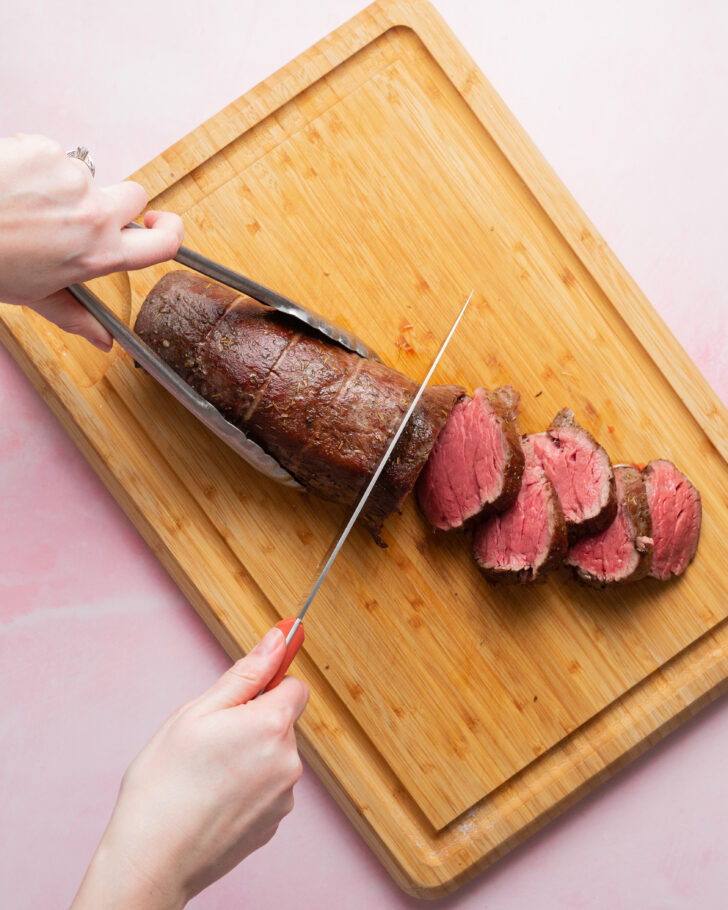
I like to serve the tenderloin with a compound butter like blue cheese butter and a crunchy salad like my Warm Brussels Sprouts Caesar Salad.
You can also view this recipe as a step-by-step web story here.
Common Questions
Filet mignon does come from a center cut beef tenderloin.
I don’t recommend finishing medium-rare cuts on the grill. It’s difficult to get the heat high enough to sear quickly and not risk overcooking. Stick to a cast iron sear!
Yes! It’s best if it’s seasoned first. Just cook for at least 3 hours if cooking from frozen.

Get the Recipe:
Medium-Rare Sous Vide Beef Tenderloin
Ingredients
- 2.5 lb center cut beef tenderloin, tied with twine
- kosher salt
- freshly cracked black pepper
- 1 tbsp ghee
Instructions
- Season the beef tenderloin well with kosher salt and black pepper.
- Add the seasoned tenderloin to a vacuum seal bag and use your vacuum sealer to seal. If you don't have a vacuum sealer, use another air removal method.
- Set up your immersion circulator in your water bath container and add the tenderloin. With those in place, fill the water bath with water to in between the minimum and maximum fill lines.
- Heat the water bath with the immersion circulator to 133 degrees F for medium-rare and cook for 2-4 hours. Do not cook longer than 4 hours.
- Remove the tenderloin from the water bath and bag. Pat completely dry with paper towels or a clean dish towel. Cut and remove the twine.
- Heat a cast iron skillet over high heat. Once smoking, add the ghee to the skillet. Once melted, add the tenderloin and sear on all sides for 30 seconds to 1 minute, until browned.
- Remove to a cutting board and let rest for 3-5 minutes before slicing into 3/4 inch thick medallions.
- Serve with a compound butter like blue cheese butter.


